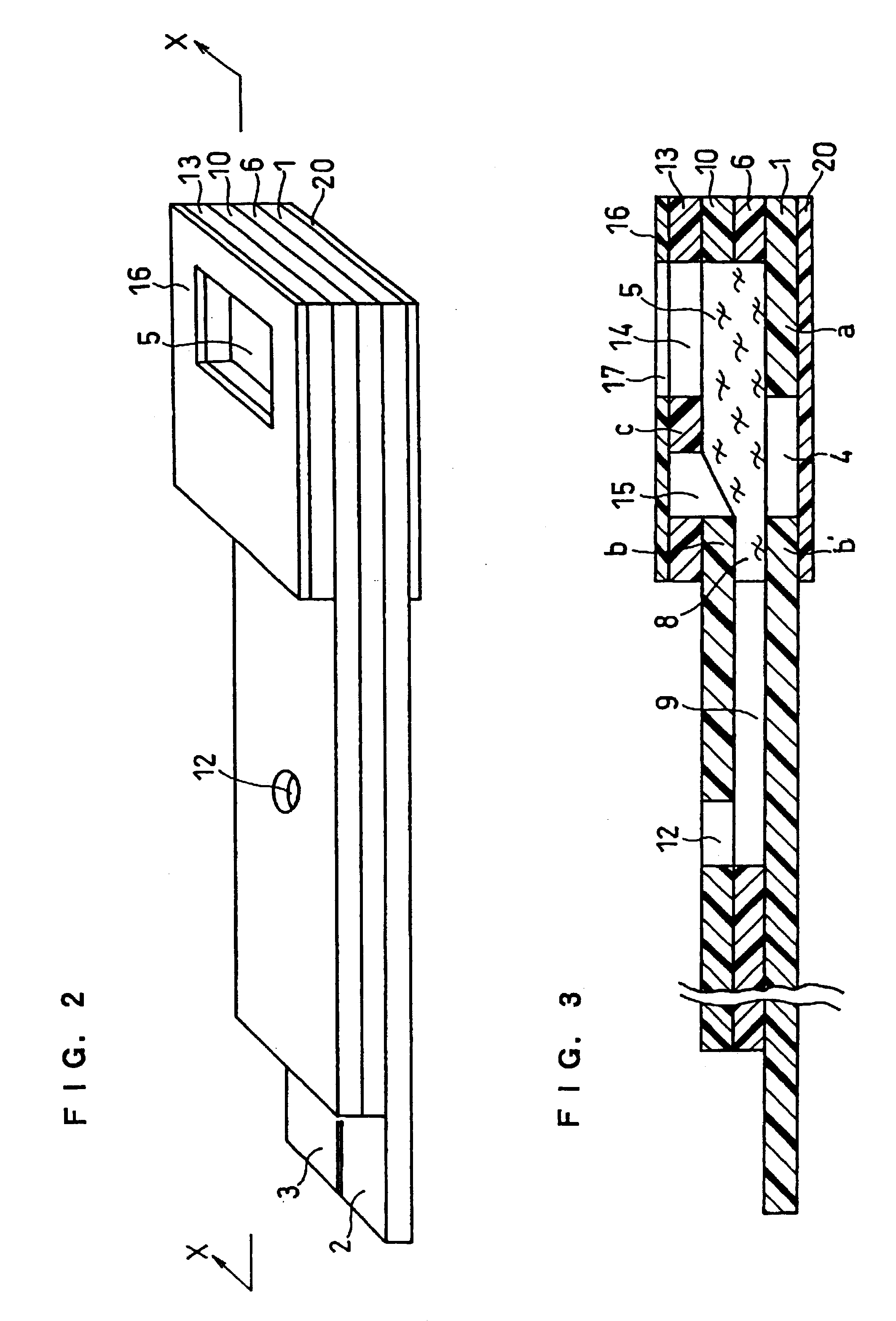Biosensor
a biosensor and sensor technology, applied in the field of biosensors, can solve the problems of destroying the hemocytes captured in the filter, unable to measure whole blood, and unable to achieve the whole blood measurement,
- Summary
- Abstract
- Description
- Claims
- Application Information
AI Technical Summary
Benefits of technology
Problems solved by technology
Method used
Image
Examples
Embodiment Construction
cholesterol sensor having the configurations of FIGS. 1 to 4, where the reaction layer 22a included the electron mediator and the reaction layer 22b included cholesterol oxidase, cholesterol esterase and a surfactant, was produced.
First, 5 .mu.l of an aqueous solution containing 0.5 wt % of CMC was dropped onto the electrode system of the base plate 1, and dried in a drying apparatus with warm blast at 50.degree. C. for 10 minutes to form the CMC layer 21.
Next, 4 .mu.l of potassium ferricyanide aqueous solution (corresponding to 70 mM of potassium ferricyanide) was dropped onto the CMC layer 21, and dried in the drying apparatus with warm blast at 50.degree. C. for 10 minutes to form the layer 18a including potassium ferricyanide.
Polyoxyethylene (10) octyl phenyl ether (TritonX100) as the surfactant was added to an aqueous solution with cholesterol oxidase originating from Nocardia (EC1.1.3.6) and cholesterol esterase originating from Pseudomonas (EC.3.1.1.13) dissolved therein. 0.6...
PUM
| Property | Measurement | Unit |
|---|---|---|
| height | aaaaa | aaaaa |
| height | aaaaa | aaaaa |
| radius | aaaaa | aaaaa |
Abstract
Description
Claims
Application Information
 Login to View More
Login to View More - R&D
- Intellectual Property
- Life Sciences
- Materials
- Tech Scout
- Unparalleled Data Quality
- Higher Quality Content
- 60% Fewer Hallucinations
Browse by: Latest US Patents, China's latest patents, Technical Efficacy Thesaurus, Application Domain, Technology Topic, Popular Technical Reports.
© 2025 PatSnap. All rights reserved.Legal|Privacy policy|Modern Slavery Act Transparency Statement|Sitemap|About US| Contact US: help@patsnap.com



